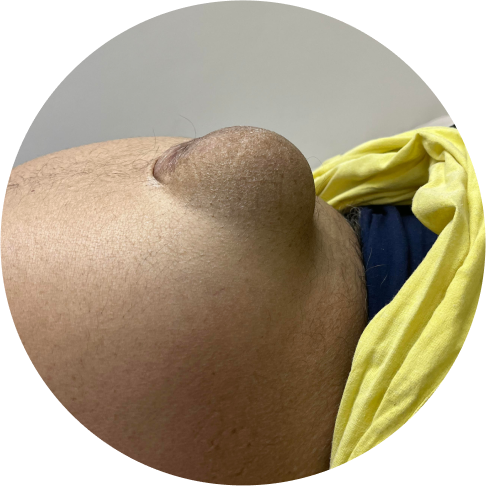Empowering Surgeons with Predictive Insights
At Curium.life, our mission is to equip surgeons with a robust, predictive tool that allows them to assess the complexity of hernias
before surgery is even scheduled. By predicting surgical challenges,
we aim to facilitate more informed treatment plans and foster meaningful discussions between surgeons and their patients.
A Comprehensive Solution for Hernia Management
Curium.life offers an integrated solution designed to assist hernia and AWR surgeons in their decision-making process:
Hernia Decision Support System (HDSS)
Our HDSS tool provides detailed insights into the complexity of hernias, predicting the likelihood of needing component separation and assessing
risks such as pulmonary complications and wound infections. Additionally, the system helps surgeons, payers, and hospital systems forecast the
costs associated with complications and offers strategies to reduce these costs by optimizing patient outcomes.
If a patient has breast cancer, they can expect virtually the same treatment anywhere in the world. However, when it comes to abdominal wall hernias,
treatment can vary significantly between countries, states, hospitals, and even within the same practice.
Our goal is to resolve this disparity by enabling the prediction of complications, optimizing outcomes, reducing costs, and ultimately decreasing morbidity.
Our advanced AI platform, Curium Image Assist, features algorithms designed to help radiologists and surgeons quantify and qualify ventral hernias in detail.
These algorithms, powered by computer vision and deep learning, assess both objective parameters (such as defect dimensions and muscle thickness) and subjective
factors (like denervation and old meshes). As we continue to refine these algorithms, our focus remains on pushing the boundaries of hernia characterization.
Supporting the Community Surgeon
Community surgeons are the backbone of the healthcare system, providing essential care and fostering healthier, more resilient communities. Hernias are among the most common surgical challenges they face.
At Curium.life, we aim to support these surgeons by creating an ecosystem that allows them to refer the most complex cases to specialist AWR surgeons, ensuring that patients receive the highest standard of care.
Our tools also empower community surgeons to make better-informed decisions, leading to improved outcomes for their patients.



